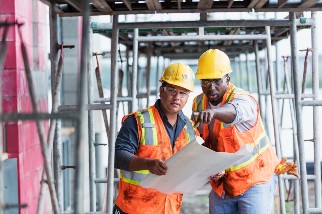 Construction work presents some of the most hazardous conditions of any industry, accounting for 21% of all U.S. workplace fatalities in 2020.
Construction work presents some of the most hazardous conditions of any industry, accounting for 21% of all U.S. workplace fatalities in 2020.
Although injuries and fatalities impact every demographic, there has been a significant increase in the injury and fatality rates among U.S. Hispanic construction workers in recent years.
Injuries and Fatalities Increase Significantly Among Hispanic Construction Workers
In 2020, the fatality rate for Hispanic construction workers in the U.S. was 41.6% higher than the rate for non-Hispanic workers, according to a recent report from the Center for Construction Research and Training (CPWR). The injury rate was 14.5% higher.
This represented a significant increase compared to 2011, when the injury rate for Hispanic workers was 20.5% lower than that of non-Hispanic workers. Furthermore, the fatality rate for Hispanic workers increased by 46.5% from 2018 to 2020, while the rate for non-Hispanic workers decreased by 6.3%.
The CPWR report also notes that the Bureau of Labor Statistics’ Survey of Occupational Injuries and Illnesses, from which its data is derived, has been found to underreport nonfatal injuries among Hispanic construction workers. And Hispanic workers now account for one-third of the U.S. construction industry.
Jorge Otalora, CHST, corporate safety director at Harkins Builders, says many elements may contribute to this recent increase in injuries and fatalities.
“There are multiple factors, some of which affect specific subgroups among our Hispanic workforce,” he says. “Age and immigration status are two things to keep in mind. In addition, disparities in knowledge and skills can be present, as well as the obvious language barrier.”
Otalora notes that in many cases, the language barrier is not the leading cause of incidents and encourages employers and safety professionals to consider all the factors that could impact the safety and health of their workforce.
How Safety Professionals Can Better Protect the Safety and Health of Hispanic Construction Workers
Improving conditions for Hispanic construction workers starts with a better understanding of the needs of individual team members, the tasks they perform, and how to communicate and collaborate to keep everyone safe on the job. Keep in mind that workers identifying as Hispanic or Latino come from many different backgrounds and have many different experiences.
“When developing safety policies and training materials, consider all those subgroups within the Hispanic workforce and incorporate different strategies,” Otalora says.
Many intersecting factors and worker identities could impact how you tailor your safety approach. For example, you may need to provide different types of training to workers with different skill sets. Using mobile apps may be effective for younger members of your workforce but not as effective for their older peers, who may prefer traditional communication methods.
Regardless of a worker’s age, Otalora says visual aids can be a valuable way to overcome any language barriers that may exist. (Remember to provide adapted materials for workers who are visually impaired.)
“Using pictograms will facilitate understanding of the material presented with little effort in the translation.”
Tools of the Trade
Free resources are available to safety professionals in the construction industry, aiming to improve training and communication with Hispanic workers.
“There are nonprofits dedicated to developing training materials for the Hispanic workforce. Partnering with those organizations offers a proactive and collaborative approach to focus on areas where our Hispanic workforce is affected,” Otalora says.
Organizations such as CPWR provide Spanish language resources, including hazard alert cards, toolbox talks, infographics, and videos to help educate Spanish-speaking team members about construction safety.
OSHA also offers a Spanish translation of its Construction eTool to familiarize safety professionals and workers with some of the most common hazards in construction work, such as falls, struck-by incidents, electrocution, and trenching and excavation.
Resources For Our Members
- Our Hispanic Safety Professionals member community connects like-minded safety professionals to support the unique needs of Hispanic safety professionals and advocate for Hispanic/Latino worker safety.
- Additionally, our Construction Safety Toolbox has guidance on identifying and controlling risks and implementing best practices to reduce worker injuries and improve productivity.
- Construction safety professionals who join our Construction Practice Specialty gain access to a network of subject matter experts as well as relevant industry education and timely information.